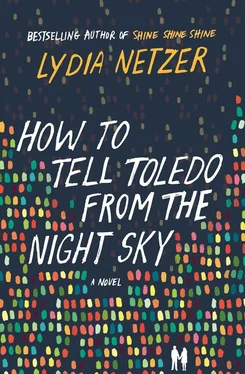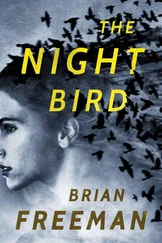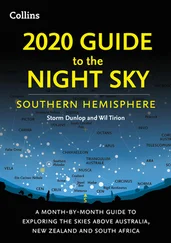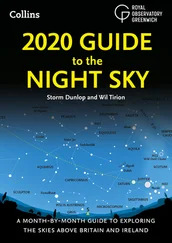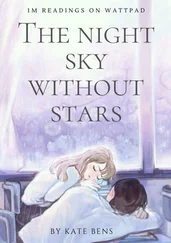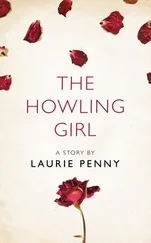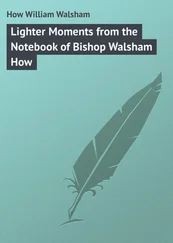After a few moments, Silvergirl’s eyes opened. The player had returned to the game. He put both his hands on the keyboard.
“Hello,” he said. “Irene?”
Silvergirl shook her head, hopped down from the ledge, and began to walk across the cave, farther toward the back, away from him. He had no choice but to follow, or let her go.
“I’m not Irene,” she said as they walked.
“You are Irene. You’re Irene, Silvergirl.”
“You found my messages. That’s good.”
Whatever game she was playing, whatever she was trying to teach him, he didn’t understand. Would she let him pull the slip over her head? Would she stand next to him, not wearing any clothes? Would his water buffalo head see what his human head could not?
“How are things in Toledo?” He asked. The words appeared in a bubble over his character’s head.
She halted. “How do you know I am in Toledo?”
“I know everything; I’m an admin.”
“I don’t know who you are.”
“I’m Belion, Archmage of the Underdark.”
She turned and murmured an incantation, her pixel hands waving in two little circles. Part of the cave wall fell away, and she opened a small door set into the rock. Behind it was a passage that was unfamiliar to him. He felt frustrated, and he wanted to stand up, grab onto the kitchen beam, and put himself straight into the throat of someone small and willing. I miss my girlfriend, he thought. I miss her! I should go to Toledo. This is stupid. Putting your dick in someone is enough. It doesn’t have to be in someone’s vagina.
“Go through this door,” she said.
“OK, OK,” he said, and tried to duck through the door. But it was too small. His character was extralarge size. He couldn’t get through the door.
“Shrinking spell?” she suggested.
“I’m an admin, I said, for chrissake,” said Belion. “I can shrink myself if I want to, but for what?” He would never shrink this avatar down. Not for some chick. Please.
“I need help,” she said.
“Are you Irene? Irene? Is that you? I think I miss you. I want to come to Toledo.”
Silvergirl went through the door. She left it open behind her, but he did not follow. Then he was alone in the cave, with nothing. It made him angry. It made him writhe in frustration. In his tired mind, he was rubbing up and down against the silken silvery folds of Silvergirl’s robe, and all of the silver was tugging at him. He pushed against the keyboard tray, his eyes closed. Her hands around him, slipping in between the fabric layers of his shorts, her eyes turned down to look at him, the way she spun around on the avatar pedestal, one hand curled into the perfect shape to hold him. In and out he went, feeling it just ahead of him, through the layers, getting warmer and falling through, until he was finally deep, deep inside, where the girl was.
While the Toledo Institute of Astronomy took root and flourished as an academic center through the second half of the nineteenth century, bringing about an international renaissance of star science, there was a strange sister renaissance flourishing in the shadows of the institute’s shiny new buildings: a rebirth of the art and science of astrology. Perhaps the new astrology’s lineage could be traced to that original witch, Esther Birchard, evicted from her position as chief weather scientist to the Stickney Carriers fleet. Perhaps it was a natural balance to all the strictly scientific behavior going on behind the walls of the institute proper. Whatever the cause, the symptoms were spreading: holy groves emerging in the gardens of the library. Prayer flags draping arrays of satellite receivers. Swamp voodoo huts popping up along the banks of the Maumee River in the dark, while everyone was looking up.
The first quantifiable development to emerge from the concentrated research efforts of astrologers and mystics in northwest Ohio was the practice of overlaying the lens of a telescope with the elements of a Native American medicine wheel, so that the degrees of a circle became merged with the white, black, red, and yellow quadrants and the thirty-six points: snow goose, west, illumination, mother earth, etc. This evolution of star-chart interpretation was attributed to no one and claimed by none, in contrast to the patents and named star clusters rolling out of the Institute of Astronomy at a rate of several per week. Yet the chart was widely adopted, as were several other effective practices blending scientific instruments with spiritual symbols.
Before the sun was identified as just another star, astrologers had sat cheek by jowl with academics in medicine and physics. Now astrology had long been relegated to the realm of pseudoscience; some even called it a religion. But in Ohio the seers and the predictive astrologers, the psychics and the strangers, taught and learned exacting principles, and apprenticeships were formalized, curricula laid down. No, there was no manual for wise men, no instructional video for understanding the philosophical underpinnings of an astrological practice. People couldn’t even really agree on whether philosophical underpinnings existed or should be set down in writing if they did. Yet as their methods became increasingly scientific and exact, with chicken bones measured in nanometers and tea leaves subjected to mass spectrometers, the star gazers of Toledo worked toward a common disciplinary matrix of theory and application, symbols, interpretations, and tools. And this is why aspiring astrologers came to Toledo. Despite their lack of leadership, hierarchy, or any overt organization, Toledo managed to turn the direction of the art.
There is no evidence or proof of the legitimacy of any theories or principles of astrology. There is no reason to believe that stars and planets or their movement could have any influence whatsoever on the lives of human beings or the countries of the earth. Neither is there any empirical evidence to show that true love is anything but a construct created by humans to solidify a family unit based on monogamy and a strong, diverse lineage for the species. No evidence of any true god. And yet we watch the stars, we fall in love, we pray. Therefore scholars of astrology, love, and religion have been forced to accept that something can be real, even if it is not true. Scientists, obviously, acknowledge no such paradox.
* * *
Irene came back to Toledo from the south, crossing the Maumee River on Interstate 75. The railroad terminal lay down on her right and beyond that were the glittering spires of the city central. Late afternoon sun slanted across the buildings and towers, sparking a red-orange glow on the shining facets of the “glass city.” She craned her neck toward the west to see the tallest tower of the Toledo Institute of Astronomy rising out of the farmland, safely outside the glow of city lights. Its central spire was crowned with a magnificent observatory. But she couldn’t see it. It was too far.
The house that burned had been in the historic district, but now her mother lived, or had recently lived, in a little house on West Bancroft close to the hospital, where the ambulances went up and down. Every time an ambulance passed, she would say, “Bless him, Mother, for he is your child.” Or she might say “Bless her…” instead. She said she always knew if it was a male or female in the ambulance.
“What if the ambulance is empty?” Irene asked once. “Stands to reason it must be, half the time.”
“There’s always someone driving, Irene,” her mother had argued.
She pulled her little gray Fiat off the freeway on Bancroft Street and joined the flow of traffic. Little had changed in Toledo that she could see. The same minimarts, the same storefronts, the boxy kit houses and the lawns tired from a summer of heat and wind. Her mother hadn’t lived in the good part of Toledo. This was the seedy part.
Читать дальше
